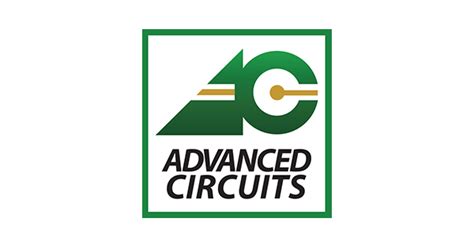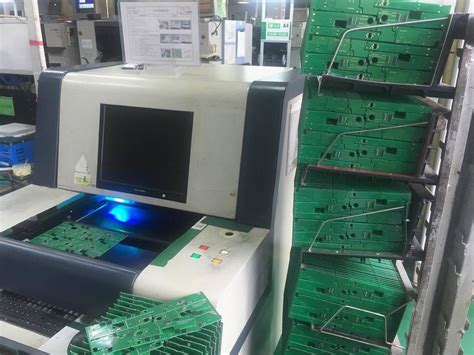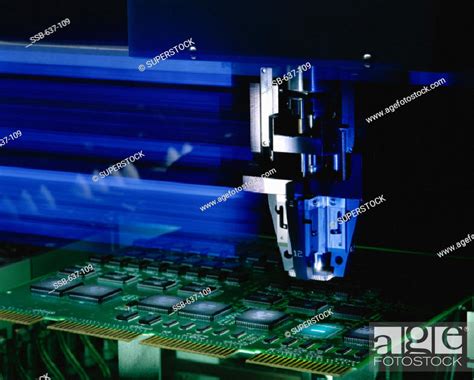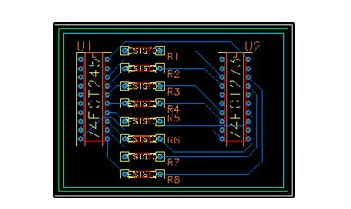Unlocking Innovation: The Future of Advanced Circuits Assembly
Key Takeaways
The landscape of advanced circuits assembly is continually evolving, driven by both technological advancements and the growing demand for more sophisticated electronics. A pivotal aspect of this evolution is pcb assembly (Printed Circuit Board Assembly), which serves as the backbone of many modern electronic devices. Recent innovations in pcba have led to streamlined processes, enhanced reliability, and the capabilities to produce more compact designs while maintaining performance levels. Techniques such as surface mount technology (SMT) and through-hole technology have seen significant improvements, allowing for greater flexibility in circuit designs. Moreover, the integration of automation and artificial intelligence facilitates more efficient production lines that can adapt quickly to changes in design requirements. As industries lean towards more sustainable practices, the focus on reducing waste during advanced circuits assembly has become increasingly important. Recognizing future trends—such as the proliferation of Internet of Things (IoT) devices—will help stakeholders understand how these innovations can establish improved connectivity solutions, ultimately reshaping the marketplace landscape. The collective insights gained from these advancements not only highlight current capabilities but also emphasize the vital role they will play in shaping future electronics and connectivity solutions.
The Evolution of Advanced Circuits Assembly: A Historical Perspective
The journey of advanced circuits assembly has been marked by significant milestones that have transformed the landscape of electronics. In the early days, the process was predominantly manual, relying heavily on human skill and experience. The introduction of printed circuit boards (PCBs) brought about a revolution. With the advent of pcb assembly, manufacturers began to utilize automated processes, enhancing precision and reducing production time.
As technology evolved, so did the techniques involved in pcba—the assembly process became more sophisticated, leading to advancements such as surface mount technology (SMT), which allowed for smaller components and denser circuit layouts. In recent years, practices integrating automation and artificial intelligence (AI) have taken center stage, significantly improving efficiency while maintaining high standards of quality.
| Year | Milestone |
|---|---|
| 1960s | Introduction of PCBs |
| 1980s | Rise of Surface Mount Technology |
| 2000s | Automation and AI Integration |
The adaptability of these technologies has not only increased production capacity but also paved the way for innovations in electronics that cater to diverse applications—from consumer electronics to sophisticated industrial machinery.
“The evolution of advanced circuits assembly is not just about technological advancement; it’s about understanding how these transformations impact our daily lives.”
Through this lens, we can appreciate how advancements in pcb assembly techniques are pivotal in constructing the very backbone of modern connectivity solutions. As we continue into an age fueled by digital transformation, understanding this evolution becomes crucial for stakeholders in every industry reliant on electronic components.
Key Innovations Reshaping Advanced Circuits Assembly
The field of advanced circuits assembly is undergoing a remarkable transformation, driven by innovative techniques and technologies that are redefining the landscape of electronics. One of the most significant advancements is the integration of high-density interconnects, which allow for more compact and efficient PCB assembly. This shift not only enhances performance but also optimizes space, enabling manufacturers to produce smaller yet more powerful devices.
Additionally, the rise of modular designs in PCBA is streamlining the assembly process. These designs facilitate easier repairs and upgrades, contributing to longer lifecycles for electronic products. As technologies such as 3D printing and additive manufacturing gain traction, they are ushering in a new era of innovation that permits rapid prototyping and lower material waste.
Furthermore, advancements in materials science are leading to the development of flexible circuit boards, which offer enhanced functionality for wearable devices and other modern applications. This innovation allows designers to create circuits that can bend or conform to different shapes without losing performance.
Moreover, the incorporation of smart technologies into circuits assembly is revolutionizing quality control and production efficiency. The use of sensors and data analytics enables manufacturers to monitor processes in real-time, reducing defects and increasing yield rates.
Overall, as we continue exploring these key innovations in advanced circuits assembly, it becomes evident that they are not just improving manufacturing processes but also shaping the future landscape of electronics and connectivity. The impact of these developments will resonate across various industries, pushing boundaries and elevating standards like never before.
Techniques Transforming the Production of Advanced Circuits
The production of advanced circuits assembly is undergoing a significant transformation, driven by innovative techniques that enhance efficiency and precision. One of the most prominent methods revolutionizing the industry is surface mount technology (SMT), which allows for the placement of electronic components directly onto the surface of printed circuit boards (PCBs). This technique not only increases production speed but also optimizes space, making it ideal for creating compact and high-density assemblies. Furthermore, advances in automated optical inspection (AOI) play a crucial role in ensuring quality control, as they utilize sophisticated imaging technology to detect defects at various stages of pcb assembly.
Additionally, techniques like laser direct imaging (LDI) have emerged as game-changers by providing superior accuracy in patterning PCBs. This innovation eliminates the need for traditional photomasks, reducing both cost and lead time while enhancing design freedom. The implementation of robotics and machine learning in the production process further complements these techniques by streamlining operations and minimizing human error, allowing manufacturers to meet high-volume demands more effectively.
Moreover, as industries seek greater connectivity solutions, the integration of advanced circuits into Internet of Things (IoT) applications becomes increasingly critical. Consequently, methodologies focusing on flexible circuit technology pave new pathways for creating adaptable electronics that can seamlessly fit into various environments. The ongoing evolution of assembly practices not only signifies a shift towards more sophisticated production capabilities but also positions companies at the forefront of technological advancement in electronics connectivity. Through these transformative techniques in advanced circuits assembly, industries can look ahead to a future defined by enhanced performance and innovation.
The Role of Automation and AI in Circuits Assembly
The integration of automation and AI technologies in the field of pcb assembly has heralded a new era of efficiency and precision. These advancements enable faster production cycles, reducing the time required for pcba processes while maintaining high standards of quality. With the use of sophisticated robotics and machine learning algorithms, manufacturers can now analyze vast amounts of data in real-time, allowing for immediate adjustments during the assembly process. This adaptability not only minimizes waste but also enhances yield rates, setting a precedent for future innovations. Furthermore, automation capitalizes on repeatability—ensuring that each component is placed accurately and reliably, which is crucial in complex circuit designs where even minor deviations can lead to significant malfunctions. The collaborative synergy between human workers and automated systems fosters an environment where creativity meets efficiency, driving the evolution of advanced circuits assembly within various industries. As these technologies continue to advance, they promise to reshape how manufacturers approach pcb assembly, ultimately leading to increased competitiveness in the global market. The shift towards smarter manufacturing processes is indicative of a larger trend that prioritizes both technological progress and sustainability—marking a pivotal moment for the future of connectivity solutions.
Sustainability in Advanced Circuits Assembly: Practices and Challenges
As the demand for electronic devices continues to rise, the need for sustainable practices in advanced circuits assembly (often referred to as pcba) becomes ever more pressing. Manufacturers are now exploring various methods to ensure that their production processes minimize environmental impact. For instance, the adoption of eco-friendly materials is a pivotal aspect of sustainable pcb assembly. This includes utilizing recyclable substrates and lead-free soldering techniques that reduce harmful emissions. Moreover, energy-efficient machinery is increasingly being deployed to lower the carbon footprint associated with manufacturing. However, challenges such as ensuring product reliability while transitioning to these sustainable practices remain significant. The integration of circular economy principles into production processes can also present complex obstacles, necessitating innovative solutions and collaboration across the supply chain. Furthermore, keeping pace with regulatory standards on sustainability adds another layer of complexity for those involved in pcba. Effective dialogue among stakeholders—engineers, manufacturers, and policymakers—will be essential for overcoming these hurdles and fostering an environment where sustainable practices can thrive within the realm of advanced circuits assembly.
Future Trends in Electronics and Their Impact on Circuits Assembly
As technology continues to advance, the future of electronics will inevitably shape the landscape of pcb assembly and the broader field of advanced circuits assembly (PCBA). Innovations in materials, design methodologies, and manufacturing processes are pushing the boundaries of what is possible in pcba. For instance, with the growing demand for miniaturization, flexible printed circuit boards (FPCBs) are gaining traction due to their lightweight nature and adaptability, allowing for more complex advanced circuits in smaller devices. Furthermore, the incorporation of smart materials opens avenues for self-healing circuits that can enhance durability and reliability. The integration of Internet of Things (IoT) technology amplifies this trend by necessitating more sophisticated connectivity solutions that rely heavily on effective circuits assembly. Automation plays a crucial role here; advancements in robotics and AI-driven systems are streamlining the production process, improving precision, and reducing errors during pcb assembly. Ultimately, as industries pivot toward these innovations, it will foster a transformative environment where electronics become more interconnected and efficient, setting new standards for circuit assembly practices. This evolution promises not only to redefine productivity but also to pave new pathways for sustainability within the manufacturing sector.
Connectivity Solutions: The Intersection of Advanced Circuits and IoT
The integration of advanced circuits assembly with the Internet of Things (IoT) is revolutionizing how devices communicate and operate. At this crossroads, pcb assembly plays a pivotal role by enabling the creation of compact, efficient, and high-performance products that are essential for the expanding network of connected devices. With the surge in demand for smart technology, innovations in pcba processes facilitate the production of sophisticated circuitry that supports real-time data transmission and enhanced functionality. Techniques such as surface mount technology (SMT) and double-sided assembly are critical in optimizing space on circuit boards while ensuring robust connectivity. This evolution not only boosts performance but also minimizes production costs and environmental impact. As industries seek to enhance their offerings through smart solutions, the capabilities derived from these advanced circuits assembly techniques will be indispensable in shaping a well-connected ecosystem, driving growth across sectors from healthcare to smart home applications. In this dynamic environment, fostering collaboration between engineers and manufacturers is essential to harnessing the full potential of IoT technologies within circuit design and implementation.
Case Studies: Success Stories in Advanced Circuits Assembly Innovation
The realm of advanced circuits assembly has witnessed groundbreaking achievements, particularly in the area of pcb assembly. Numerous organizations have demonstrated the transformative power of innovative techniques and technologies that redefine traditional practices. For instance, a leading firm in the telecommunication sector successfully integrated flexible pcba processes, drastically reducing production timelines and costs. By employing automation and employing cutting-edge materials, this company not only enhanced product quality but also optimized its supply chain efficiency. Another case highlights a start-up focused on wearable technology, which leveraged advanced circuits assembly methods to develop ultra-thin, lightweight devices without compromising functionality. The strategic collaboration between engineers and designers led to the creation of a sustainable assembly process that minimizes waste while maximizing performance. These success stories exemplify how advanced circuits assembly continues to evolve, enabling industries to harness emerging technologies and stay competitive in today’s fast-paced market. As these innovations unfold, they pave the way for future developments in pcb assembly, promising even greater advancements that will shape the future landscape of electronics and connectivity.
Conclusion
As we look toward the future of advanced circuits assembly, it is clear that the landscape is rapidly evolving, driven by remarkable innovations and dedicated research in the field. The integration of sophisticated techniques, such as surface mount technology (SMT) and pick-and-place systems, has revolutionized PCB assembly, optimizing production efficiency and accuracy. This shift has paved the way for PCBA processes that prioritize precision and reduce errors, making them crucial for modern electronics manufacturing.
Moreover, the incorporation of smart technology into circuits assembly processes has streamlined workflows. Automation plays a pivotal role in enhancing productivity while minimizing costs. With advanced robotics and artificial intelligence now in use, manufacturers can achieve greater scalability without sacrificing quality. This transition not only impacts efficiency but also allows companies to respond flexibly to market demands.
Additionally, as industries increasingly focus on sustainability, evolving practices within advanced circuits assembly aim to reduce waste and enhance energy efficiency. This commitment to environmentally-friendly methods positions manufacturers to better meet regulatory requirements while appealing to environmentally-conscious consumers.
Ultimately, as we delve deeper into the promising future of advanced circuits assembly, we anticipate not only a transformation in how electronic components are produced but also in how they connect with emerging innovations such as the Internet of Things (IoT). The synergy between these technologies will undoubtedly influence both individual consumer experiences and broader industry applications for years to come.
FAQs
What is PCB assembly?
PCB assembly, or PCBA, refers to the process of soldering electronic components onto a printed circuit board (PCB) to create functioning electronic devices.
What are the key benefits of advanced circuits assembly?
The advanced circuits assembly process enhances precision, improves efficiency, and fosters innovation in electronic products, contributing to smaller sizes and lighter weights without sacrificing performance.
How does automation impact PCB assembly?
Automation significantly boosts the speed and reliability of PCBA, allowing for mass production while minimizing human error and reducing labor costs.
What technologies are driving advancements in PCBA?
Technologies such as surface mount technology (SMT), automated optical inspection (AOI), and robotics are at the forefront of advanced circuits assembly, streamlining production processes and ensuring high-quality outputs.
Can sustainability practices be implemented in advanced circuits assembly?
Yes, sustainability is increasingly becoming integrated into advanced circuits assembly, with practices like reducing waste, using eco-friendly materials, and optimizing resource consumption being prioritized by leading manufacturers.







